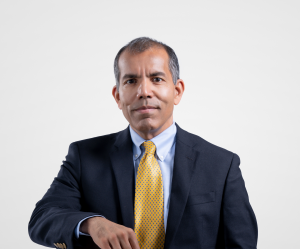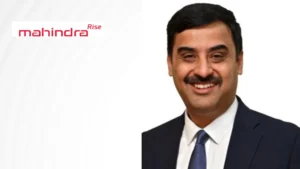 In conversation with Enersider, Srivatsan Iyer, Global CEO, Hero Future Energies talks about the company’s international presence, the importance of innovative financing models and its net-zero goals.
In conversation with Enersider, Srivatsan Iyer, Global CEO, Hero Future Energies talks about the company’s international presence, the importance of innovative financing models and its net-zero goals.
Following are the edited excerpts from the interview:
HFE has grown into a global renewable powerhouse in just over a decade. What are the core leadership philosophies that have shaped this rapid evolution, and how do they reflect a ‘next-gen’ mindset?
At HFE, our growth has been anchored in clarity of purpose, agility in execution, and a deep belief in empowering people. From day one, we’ve seen ourselves not just as an energy developer but as a change agent for the transition to a cleaner, smarter future. This ‘next-gen’ mindset reflects in our willingness to take calculated risks—whether in adopting hybrid technologies early, or in-house capabilities across energy storage and green hydrogen. Our leadership approach combines strong institutional discipline with the entrepreneurial freedom to innovate and lead from the front.
With projects spanning from hybrid power to green hydrogen, how does HFE prioritize innovation while ensuring commercial viability and long-term sustainability?
Innovation at HFE is not a siloed function—it’s built into how we originate, design, and execute projects. For us, the litmus test of innovation is not novelty, but impact. We constantly ask: does it lower costs, enhance reliability, reduce emissions, or unlock new markets? Every new venture—whether hybrid plants, energy storage, or green hydrogen—is evaluated not just for technical feasibility, but for its ability to deliver resilient, bankable, and scalable outcomes over the long term. That balance between pushing the envelope and grounding it in commercial discipline is what defines our approach.
How important are innovative financing models in scaling renewable projects for the next generation?
Extremely important. As the energy transition expands beyond solar and wind into storage, hydrogen, and distributed energy, traditional financing models often fall short. Bespoke structures — be it platform-level investments, project-level equity, or blended finance mechanisms —
not only enable scale but also de-risk future technologies and geographies. Financing innovation is as critical as technological innovation if we are to make the energy transition inclusive and investible.
HFE being a global renewable energy player, what are the important factors to consider in diverse markets with different local requirements?
Every market has its own energy challenges and regulatory rhythms. What works in India might not work in the UK or Southeast Asia. Our approach is to respect that local context — be it land dynamics, grid readiness, or community expectations — while leveraging our global experience to bring differentiated solutions. We also believe in building strong local teams and partnerships. Ultimately, it’s about finding the right balance between global standards and local sensitivity.
As HFE targets carbon neutrality or becoming ‘net zero’ by 2030, how do you ensure that this internal transformation supports and enhances your clients’ net- zero journeys?
Our net-zero ambition is not just an internal goal—it’s a commitment to lead by example. We are decarbonizing our own operations and achieving net neutrality for Scope 1 and Scope 2 emissions through maximizing the use of clean energy, use of recycled materials and energy- efficient equipment, and digitization. But more importantly, we’re building capabilities—like high-CUF renewable energy offerings and storage solutions—that help our clients meet their own sustainability targets. Our journey is designed to amplify theirs. We see this as a collaborative transformation.
From executing India’s first wind-solar hybrid to winning the country’s first utility-scale storage tender, how do you cultivate a culture that constantly pushes the technology frontier?
It starts with encouraging curiosity and calculated risk- taking. We have created an internal environment where cross-functional teams can pilot new technologies, learn quickly, and iterate. We invest not only in the cutting edge of technology, but also in partnerships—with OEMs and research institutions—to stay ahead of the curve.
Recognition, accountability, and an openness to failure are
all part of how we embed innovation into our culture.
What role do young leaders and emerging talent play at HFE in driving the transition toward renewable power?
A very significant one. More than 55% of our workforce is under 35, and many of our
project sites and design cells are led by young professionals. We believe the energy transition is not just a technical shift, but a generational one. Emerging talent brings fresh thinking, digital fluency, and a sense of urgency. We provide them with the runway and mentorship to lead, and the results speak for themselves—whether it’s faster project execution, smarter analytics, or new solutions.
With backing from global investors like IFC and KKR, how does HFE balance commercial expectations with its ‘profit for purpose’ philosophy?
Our investors back us because they believe in our purpose—and because we deliver commercially. We view ‘profit for purpose’ not as a trade-off, but as a multiplier. Strong
governance, disciplined capital allocation, and operational excellence are the foundation
on which we pursue high-impact projects. The credibility we build with stakeholders—
regulators, customers, and communities—often becomes a source of competitive advantage. This alignment of purpose and performance is what makes HFE a sustainable investment.
What advice would you give to aspiring energy professionals who want to lead the transition in sectors traditionally dependent on fossil fuels?
Don’t wait for the perfect moment—start where you are. The energy transition needs people who are technically sharp, ethically grounded, and bold enough to challenge the status quo. Learn how systems work—grid, finance, policy— and then find the leverage points where you can make the biggest impact. Most importantly, stay curious, stay collaborative, and stay committed. This is not just a career—it’s a cause worth leading.






